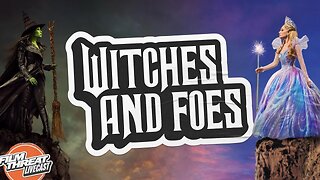Premium Only Content

1-HTML and HTML5 Introduction
HTML5 is a markup language used for structuring and presenting content on the World Wide Web. It is the fifth and last[3] major HTML version that is a World Wide Web Consortium (W3C) recommendation. The current specification is known as the HTML Living Standard. It is maintained by the Web Hypertext Application Technology Working Group (WHATWG), a consortium of the major browser vendors (Apple, Google, Mozilla, and Microsoft).
HTML5 was first released in a public-facing form on 22 January 2008,[2] with a major update and "W3C Recommendation" status in October 2014.[4][5] Its goals were to improve the language with support for the latest multimedia and other new features; to keep the language both easily readable by humans and consistently understood by computers and devices such as web browsers, parsers, etc., without XHTML's rigidity; and to remain backward-compatible with older software. HTML5 is intended to subsume not only HTML 4 but also XHTML 1 and DOM Level 2 HTML.[6]
HTML5 includes detailed processing models to encourage more interoperable implementations; it extends, improves, and rationalizes the markup available for documents and introduces markup and application programming interfaces (APIs) for complex web applications.[7] For the same reasons, HTML5 is also a candidate for cross-platform mobile applications because it includes features designed with low-powered devices in mind.(wikipedia).
-

Sean Unpaved
2 hours agoWill Caleb Williams & Bears WIN The NFC North? | UNPAVED
3.08K -
 LIVE
LIVE
Lara Logan
3 hours agoSTOLEN ELECTIONS with Gary Berntsen & Ralph Pezzullo | Ep 45 | Going Rogue with Lara Logan
406 watching -
 1:47:18
1:47:18
Steven Crowder
4 hours agoTo Execute or Not to Execute: Trump Flips the Dems Sedition Playbook Back at Them
246K269 -
 16:11
16:11
RealMetatron
19 hours agoHasan Piker got HUMBLED in New York
7.43K5 -
 LIVE
LIVE
Viss
3 hours ago🔴LIVE - Helping Those That Need It Today - Arc Raiders!
157 watching -
 43:37
43:37
The Rubin Report
3 hours agoTriggernometry Hosts Try to Hide Their Shock at Sam Harris’ Charlie Kirk Claim
29.7K28 -
 LIVE
LIVE
SOLTEKGG
2 hours ago🟢 Live: Pro Player Returns to Battlefield 6 RED SEC
46 watching -
 LIVE
LIVE
StevieTLIVE
3 hours agoFriday Warzone HYPE: Come Chill, Chat, and Watch Me Fry
34 watching -
 1:00:57
1:00:57
Dr. Eric Berg
3 days agoThe Dr. Berg Show LIVE - November 21, 2025
19.9K9 -
 LIVE
LIVE
Film Threat
19 hours agoWICKED FOR GOOD + SISU 2 + LOADS OF REVIEWS! | Film Threat Livecast
78 watching